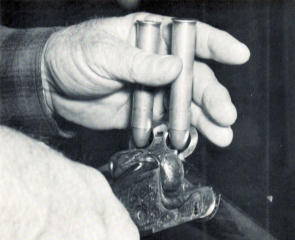| DUGABOY1 |
| (.400 member) |
| 13/06/08 01:00 AM |

|
|
|
Quote:Quote:
the German (or newer guns) (to me) are much easier to regulate.
I assume that you mean that it is easier to find a load that shoots to point of aim, which is to be expected because they are regulated at the factory with current commercial loads, whereas older doubles were regulated with loads (powders, primers and bullets) that may no longer be available.
I agree Jabalihunter! The newer rifles are not only made of better steel, but are regulated with modern powders, primers, and better brass. The cost is lower, not because of less value, but because of modern manufacturing machinery that illiminates the bulk of the "hog work" historicly done by aprentices by hand. This leaves the skilled work, that is done by very skilled artisens, the same way it was 100 yrs ago. Most of these are working rifles, and that too, cuts retail cost.
The missuse of the word "REGULATE" is one of the reasons lots of novices do not fully undersatnd how double rifles are supposed to work. The factories are responcible for this, by their liberal use of that word without expalination. Regulation is a physical manipulation of the barrel's conversion by the barrel man at the factory. People have come to use this word "REGULATING" for the working up loads to fit the regulation, and this isn't correct.
Then the maker, conpounds the missunderstanding by calling the sight cutting with an uterance of "SIGHTS REGULATED AT 100 Mtrs"! This leads people to assume the rifles crosses it's shots at that range, and this is also not true. The maker is talking about two different things they call regulation. This "REGULATION" has to do with cutting the sightes only, and has nothing to do with the regulation of the barrels. It would be called "REGULATION" on a single barrel rifle as well, and is only adjusting the sights to be "ON TARGET" at 100 Mtrs, and the barrels do not cross at any distance,if properly loaded, but the center of each barrel's individual group remains on it's own side of point of aim, with the sights pointing at a point that is half way between the centers of the individual barrel groups, forming a composite group around the POA @ 100Mtrs.
